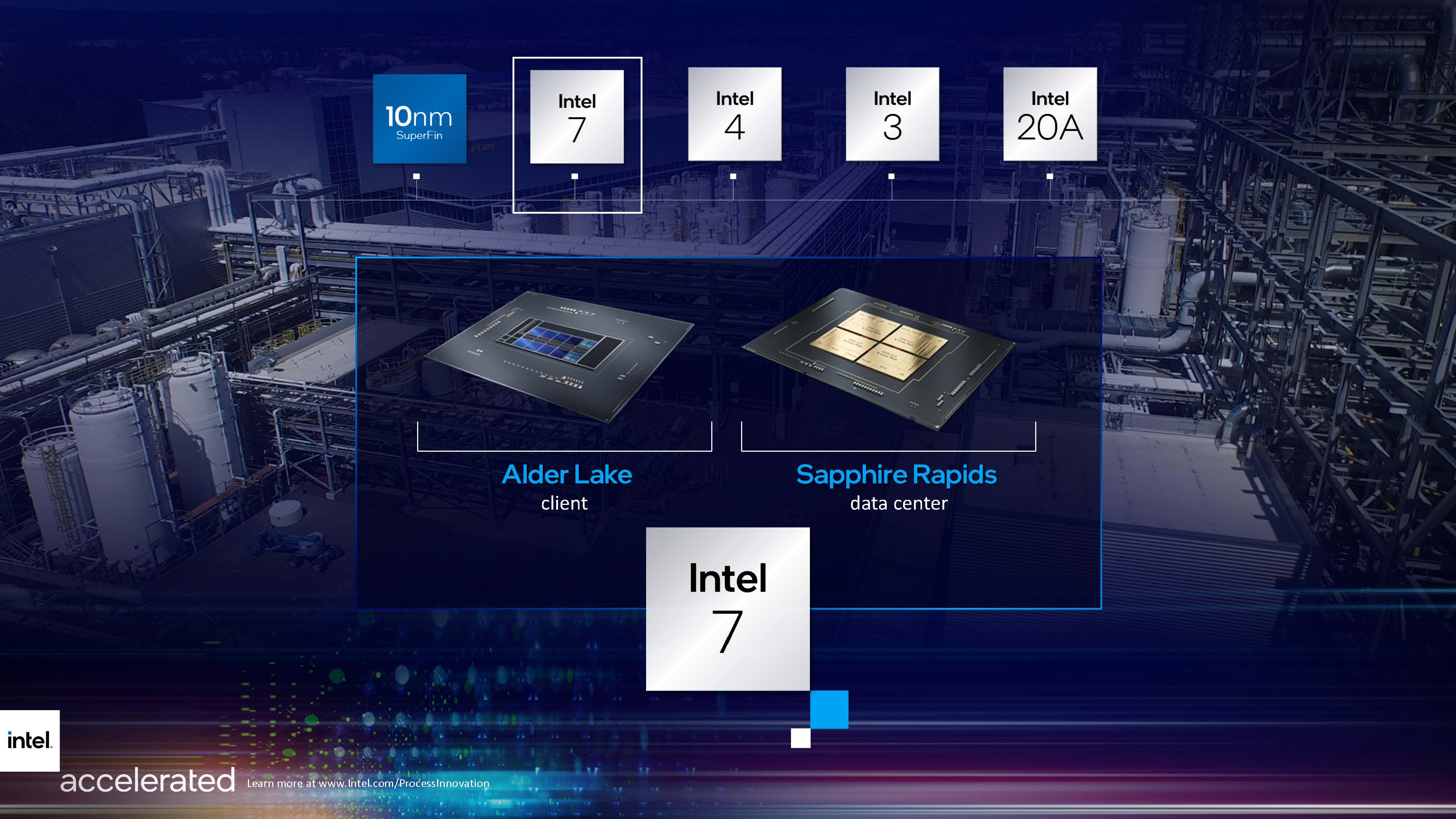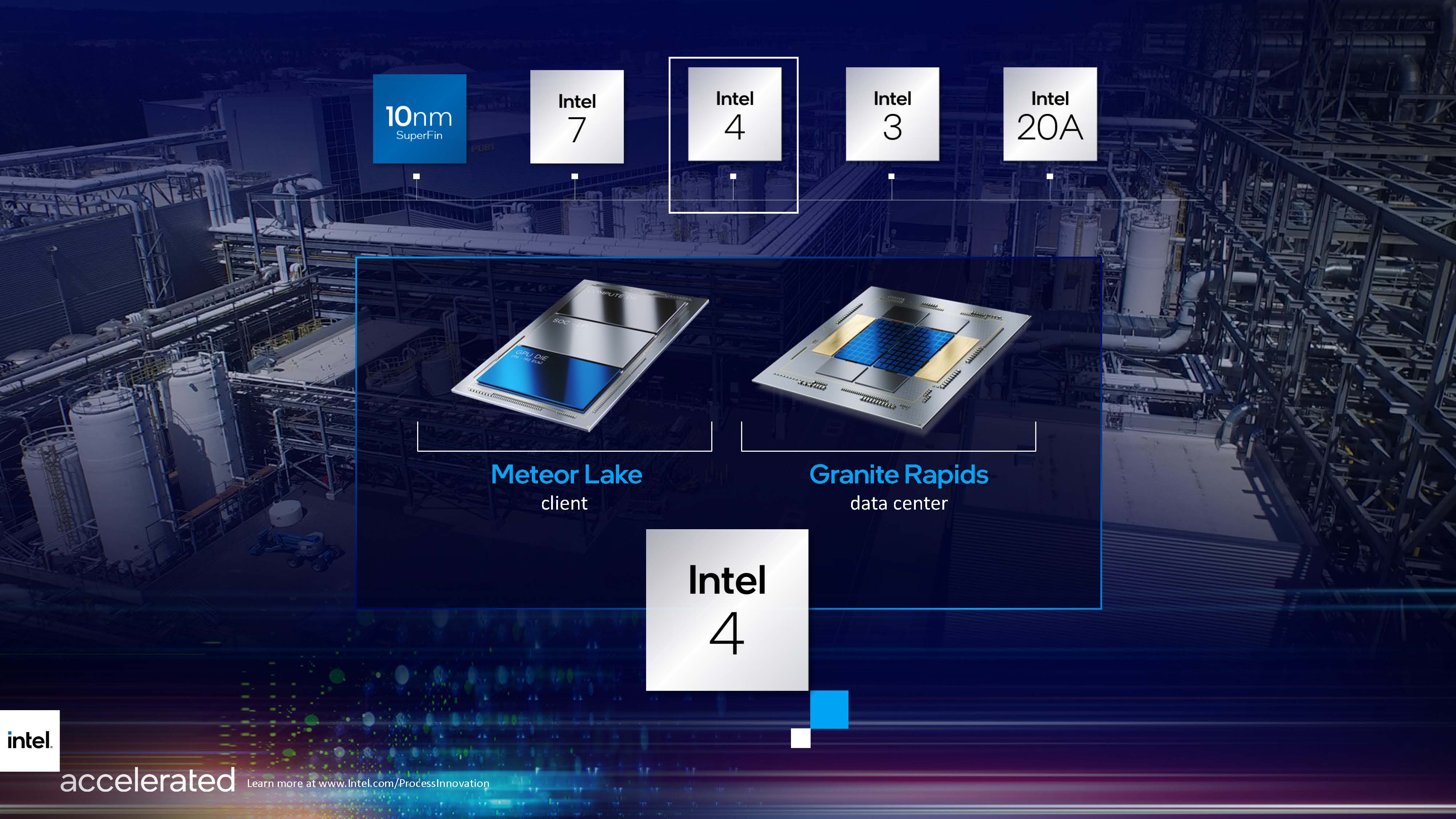Intel Teases 14th-Gen Meteor Lake CPUs With Tile Design and 192 EUs
During the Intel Accelerated webcast, Intel dropped a couple of bombs. In addition to sharing its product roadmap through 2025 and a new naming scheme for nodes, the chipmaker also unveiled the designs for its future Alder Lake, Meteor Lake, Sapphire Rapids and Granite Rapids processors.
Meteor Lake, Raptor Lake's replacement, will feature a tile design, allowing Intel to slap different die onto the same silicon. Like Granite Rapids, Meteor Lake is based on Intel's 7nm node that has been rebranded to 'Intel 4.' That doesn't mean that all the tiles are based on Intel 4, though. One of the advantages of a tile design is that Intel can mix and match different process nodes. Predictably, the chipmaker will rely on its Foveros 3D packaging technology for Meteor Lake.
Intel's presentation revealed that Meteor Lake is equipped with three tiles: a compute die, SOC-LP die and GPU die. When it comes to thermal limits, Meteor Lake will operate between 5W to 125W. We've seen the 125W rating numerous times in previous generations of Intel desktop processors. So the flagship Meteor Lake chip, which could be the Core i9-14900K, is likely rated for 125W.
Meteor Lake will offer a very substantial uplift in integrated graphics performance. The new processors will continue where Intel currently left off. The current limit on Intel chips are 96 execution units (EUs). However, Meteor Lake will start at 96 EUs and max out at 192 EUs, a 100% increase in the upper limit.
Alder Lake will slot into the new LGA1700 socket. Intel has confirmed that Raptor Lake will also drop into the same socket as well. However, Meteor Lake may command a different socket, which is this case has been rumored to be the LGA1800 socket.


Other tidbits from Intel's presentation involved designs for Alder Lake, Sapphire Rapids and Granite Rapids. We already know that Alder Lake is a hybrid processor with a mix of big and small cores that comes out of Intel's 10nm Enhanced SuperFin, now 'Intel 7' oven. The illustration shows a design with a 8+8 configuration, which aligns with one of the potential Alder Lake configurations. Therefore, the flagship Alder Lake desktop processor will probably have 16 cores in total, consisting of eight Golden Cove cores and eight Gracemont cores. Only the first will enjoy Hyper-Threading, though.
Just like Alder Lake, Sapphire Rapids will be based on the Intel 7 node. The die shot exhibits a multi-chip layout with four dies. Assuming that each die houses 15 cores, Sapphire Rapids can offer up to 60 cores, but it won't. Previous leaked slides claimed that Sapphire Rapids will be restricted to 56 dies, meaning Intel will disable four cores.
Get Tom's Hardware's best news and in-depth reviews, straight to your inbox.
Granite Rapids, the successor to Sapphires Rapids, could be a whole different monster. Based on Intel's diagram, Granite Rapids seems to only sport two dies, but really big ones. We spotted 60 small, blue squares in each die. If these squares represent cores, then Granite Rapids would rock up to 120 cores and take the pain to AMD's EPYC lineup.
Chronologically, Alder Lake can land late this year with Sapphire Rapids en route for a potential first quarter 2022 launch. Meteor Lake, on the other hand, will debut sometime in the first half of 2023, while Granite Rapids following shortly afterwards.

Zhiye Liu is a news editor, memory reviewer, and SSD tester at Tom’s Hardware. Although he loves everything that’s hardware, he has a soft spot for CPUs, GPUs, and RAM.